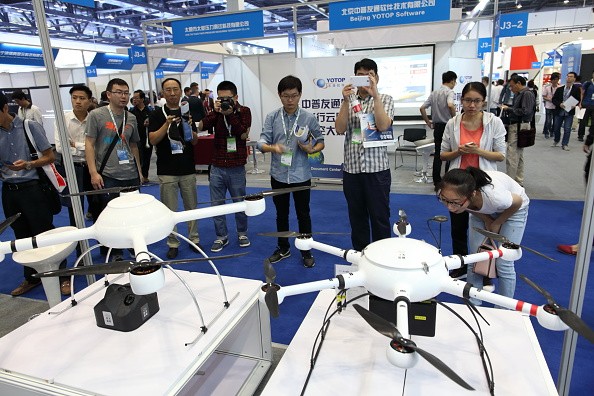Scientists and engineers in China are developing solar-powered drones capable of staying airborne for at least a month, a senior designer has revealed.
Shi Wen, head of unmanned aircraft development at the China Academy of Aerospace Aerodynamics (CAAA), told the China Daily on Monday that his team has developed prototypes utilizing new technologies and equipment.
Last week, the team flew a giant solar-powered drone for the first time at an airport in northwestern China. The 14-meter-long drone has a 45-meter wingspan, "longer than a Boeing 737," and can carry a payload of up to 20 kilograms, Shi was quoted as saying.
He said the mass-produced versions are expected to fly for one to six months.
"We plan to make one that can stay in the air for five years. Our next-generation drones will have a 60- to 70-meter wingspan and will be able to carry a payload of at least 50 kg," Shi said.
A scale model of the drone is part of several designs developed by the academy that will go on show at the 11th China International Aviation and Aerospace Exhibition, also known as the Zhuhai Air Show, on Nov. 1.
CAAA began its foray into drone technology in 2002 and has conducted its first test flight three years later, Shi said, adding that the academy's engineers have gone on to develop advanced aerodynamic designs, ultralight frames, flight control systems, and high-quality solar cells.
The scientists are continuing to work on improved batteries and motors, he said, noting that China is already one of the world's major producers of solar-powered drones, next only to the United States.
CAAA, a subsidiary of China Aerospace Science and Technology Corp, is one of China's biggest developers of military-grade drones. Shi said one its models, the CH series, has been sold to 20 military buyers in more than 10 countries.
Solar-powered drones are capable of flying at altitudes of 20 to 30 kilometers for long periods of time, making them suitable for use as "atmospheric satellites" to provide services conventionally dominated by space satellites, Shi said.
He added that the drones pose big potential in military reconnaissance, electronic warfare, maritime surveillance, traffic navigation, telecommunications, and aerial surveys.
Shi expressed hope that the solar-powered drones will be well received in the market and said they have already received a lot of attention from potential customers.
Wu Peixin, an aviation industry analyst in Beijing, said researchers around the world are racing to develop high-efficiency solar cells, reliable ultralight frames, and more efficient power management systems to for use in mass-produced solar-powered drones.
Among the contenders is social media titan Facebook, which is currently developing a drone called Aquila that will transmit Internet signals to rural areas that lack the telecom infrastructure for Web connectivity.
The Swiss Federal Institute of Technology in Zurich has also developed the solar-powered AtlantikSolar UAV as a testbed to demonstrate new technologies.



























